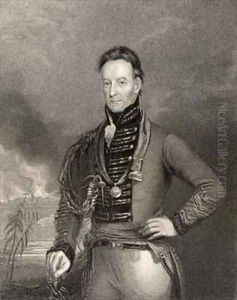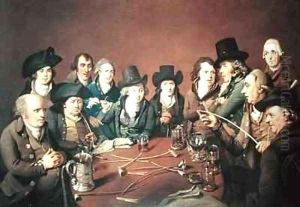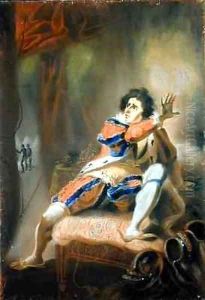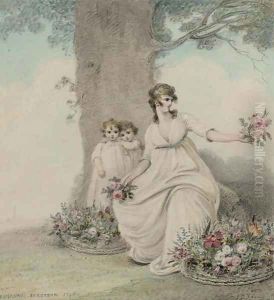John Eckstein Paintings
John Eckstein, sometimes also spelled 'Eckstine,' was a notable artist of the 18th century, primarily recognized for his work as a painter, engraver, and drawing master. Born in 1735 in the city of Stuttgart, Germany, Eckstein's artistic journey began in Europe, where he initially honed his skills. Not much is documented about his early life and training, but it is evident that he possessed a diverse artistic talent that enabled him to explore several mediums and styles throughout his career.
Eckstein's work gained recognition, and his reputation grew as he worked on various projects, including book illustrations and portraitures. His style was largely influenced by the European artistic movements of his time, yet he managed to incorporate his own vision and technique into his creations. In the latter half of the 18th century, Eckstein moved to England, where he continued to work and contribute to the local art scene.
The most significant turn in John Eckstein's career came when he decided to relocate across the Atlantic. In the 1790s, he moved to the United States, becoming one of the many European artists who sought new opportunities in the burgeoning nation. Settling in Philadelphia, which was a cultural hub in the United States during the late 18th century, Eckstein became part of the vibrant artistic community there. In Philadelphia, he continued his work as a portrait painter and also taught drawing and painting, influencing a new generation of American artists.
One of Eckstein's notable contributions was his involvement with the Federalist era of the United States. He became known for his patriotic art, which included engravings and paintings that celebrated the young nation's heroes and significant events. His works during this time reflected the optimism and nationalistic spirit of the era.
John Eckstein's career spanned several decades and two continents, marking him as a versatile and adaptive artist who could navigate the changing artistic and cultural landscapes of his time. Despite the challenges of being an immigrant artist, his work was well-received, and he managed to carve out a space for himself within the American art scene. Eckstein passed away in 1817, leaving behind a body of work that would contribute to the understanding of the transatlantic art movement of the late 18th and early 19th centuries.



